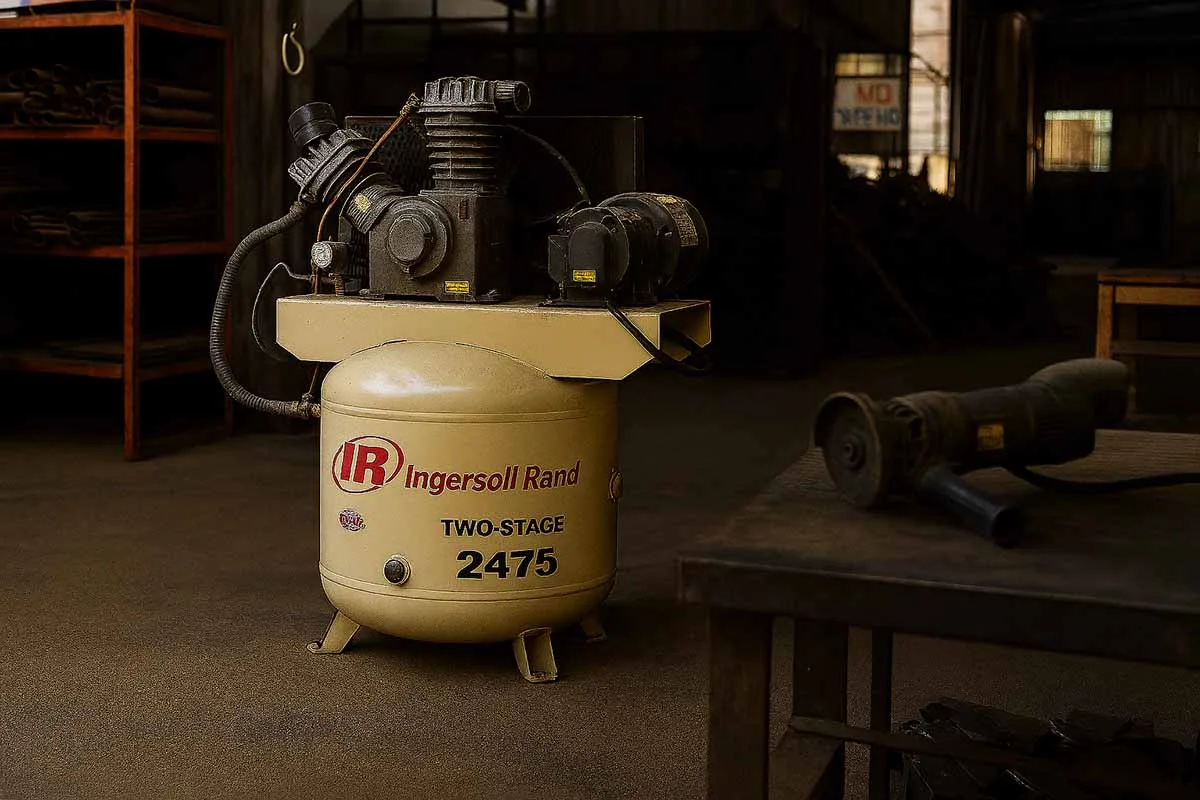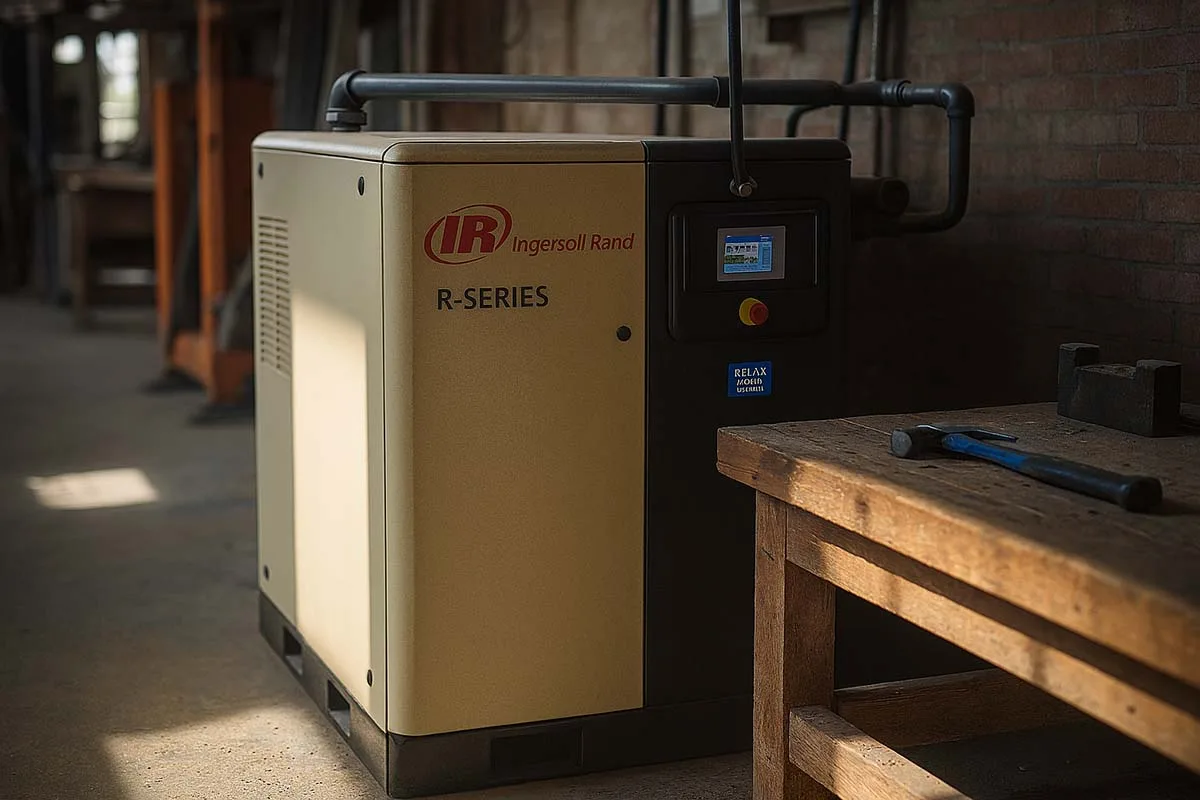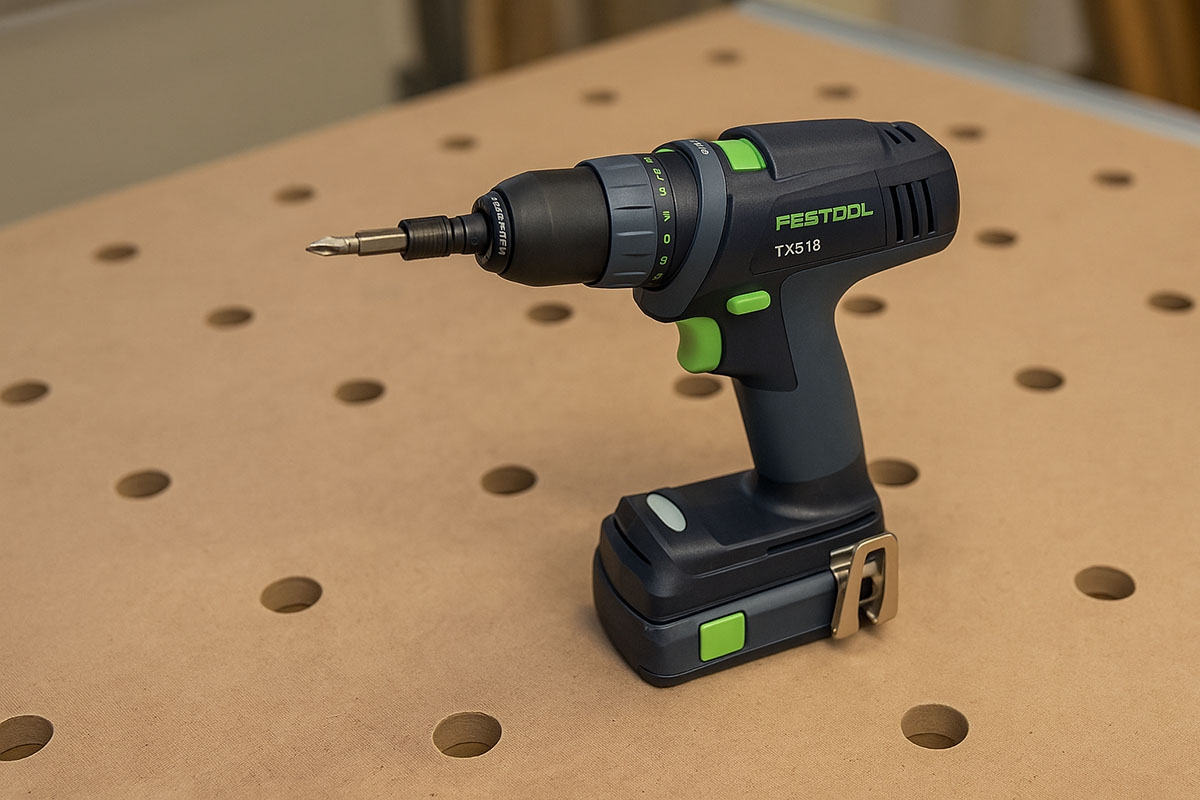Introduction: What Is the 2475 Model and Who Is It For?
The Ingersoll Rand 2475 is a two-stage, oil-lubricated reciprocating air compressor designed for demanding industrial applications. Part of the renowned Type-30 series, the 2475 is built for longevity, high-pressure output, and continuous-duty cycles. With models ranging from 5 to 10 HP and up to 24 CFM at 175 PSI, it’s a favorite among auto shops, machine shops, fleet maintenance teams, and small manufacturers who need rugged performance without compromise.
If your operation involves grinding, sanding, painting, or pneumatic tooling, the 2475 delivers consistent air with minimal downtime—making it a trusted workhorse across industries.
Key Features and Technical Specifications
Core Features:
- Two-Stage Compression: Delivers up to 175 PSI for high-demand tools and processes.
- Cast Iron Construction: Built for durability with independently cast cylinders and one-piece connecting rods.
- 100% Duty Cycle: Designed to run continuously without overheating.
- ODP Electric Motor: Open drip-proof motor for reliable performance in industrial settings.
- Automatic Start/Stop Control: Maintains pressure without manual intervention.
- ASME-Certified Receiver Tank: 80-gallon vertical or horizontal options.
- All-Season Select Lubricant: Extends service intervals to 2,000 hours between oil changes.
Technical Snapshot:
| Specification | Value Range |
|---|---|
| Horsepower | 5–10 HP |
| Max Pressure | 175 PSI |
| Air Delivery | Up to 24 CFM |
| Tank Size | 80 gallons (vertical or horizontal) |
| Duty Cycle | 100% continuous |
| Motor Type | ODP electric |
| Warranty | 2 years (with start-up kit) |
Pros and Cons
Pros:
- Built for continuous-duty operation
- High-pressure output for demanding tools
- Durable cast iron pump with easy maintenance
- Long service intervals with All-Season Select oil
- ASME-certified tank for safety and compliance
Cons:
- Louder than rotary screw models
- Requires regular belt tension checks
- No remote monitoring or smart diagnostics
- Larger footprint compared to compact compressors
Comparison: 2475 vs. UP6 vs. Quincy QT-54
| Feature | Ingersoll Rand 2475 | Ingersoll Rand UP6 | Quincy QT-54 |
|---|---|---|---|
| Compressor Type | Reciprocating | Rotary Screw | Reciprocating |
| Max Pressure | 175 PSI | 200 PSI | 145 PSI |
| Duty Cycle | 100% | Variable (auto stop) | 100% |
| Noise Level | Moderate | Low | Moderate |
| Smart Monitoring | No | No | No |
| Tank Size | 80 gal | Integrated TAS | 60 gal |
The 2475 stands out for its rugged build and high-pressure output. The UP6 offers quieter operation and integrated air treatment, while the Quincy QT-54 is a solid alternative for budget-conscious buyers with lower PSI needs.
Use Cases: Who Should Buy It (and Who Shouldn’t)
Best For:
- Auto body shops using pneumatic sanders and paint sprayers
- Machine shops with grinders, drills, and impact tools
- Fleet maintenance teams needing reliable air for tire inflation and repairs
- Facilities with high-pressure requirements and long operating hours
Not Ideal For:
- Noise-sensitive environments
- Users needing smart diagnostics or remote access
- Small workshops with intermittent air needs
Ingersoll Rand 2475 FAQ
Interesting & Lesser-Known Facts
Interesting Fact: The 2475’s cast iron pump design is modeled after Ingersoll Rand’s legacy Type-30 architecture—used in military and aerospace applications for decades.
Lesser-Known Fact: Its overhung crankshaft eliminates the need for internal bearings, reducing friction and simplifying maintenance.
Further Read
- Ingersoll Rand
- Ingersoll Rand 2475 Review: Heavy-Duty Reciprocating Air Compressor
- Ingersoll Rand UP6 Series Review: Compact Rotary Screw Compressor
- Ingersoll Rand R-Series Review: High-Efficiency Rotary Screw Compressors for Industrial Demands
- Best Ingersoll Rand Air Compressors: 2475 vs UP6 vs R-Series Buying Guide
- How to Troubleshoot Common Compressor Problems
- How to Improve Energy Efficiency of Your Compressor
Conclusion: Built to Last, Ready to Work
The Ingersoll Rand 2475 isn’t just a compressor—it’s a legacy of industrial reliability. If your operation demands high pressure, long runtimes, and minimal downtime, this two-stage workhorse delivers. It’s not flashy, but it’s fiercely dependable.
Have you used the 2475 in your shop or facility? Drop a comment below and share your experience. Tag a colleague who’s shopping for a compressor that won’t quit. Let’s keep the air flowing and the work moving.
🔗 Share this review on LinkedIn, Reddit, or your favorite industrial forum. Your insights could help another team make a smarter investment.





